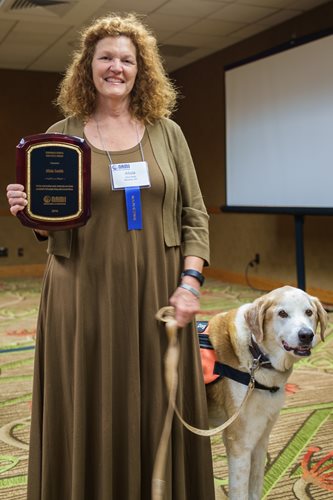
Alicia Smith and Hunka at the 2016 NAMI National Convention
I’d like to start by paying tribute to Hunka, a service animal for Alicia Smith, NAMI’s representative on a U.S. Department of Transportation (DOT) advisory group. Hunka was a 12-year-old St. Bernard/Smooth Coated Collie mix, adopted from a local shelter. We were sad to learn that he passed on recently.
Whenever Alicia was in NAMI’s national office for meetings, Hunka—full name: Hunka Hunka Burning Love—would curl up and wait under a desk. We were always glad to see him (and he always wagged his tail in return).
He was a true NAMI advocate and an example of why airline regulations on service animals are important.
Alicia and Hunka traveled together to and from Montana and Washington, D.C. six times last year, as Alicia was co-chair of a working group on the definition of “service animal” under federal law. The full committee—involving American Airlines, Psychiatric Service Dog Partners, America’s Vet Dogs and several other groups—included stakeholders from all points of view, trying to balance concerns and produce reasonable recommendations. But they didn’t reach consensus.
DOT is still considering whether to end or restrict emotional support animals on passenger planes and may impose restrictions unilaterally. Airlines currently have individual restrictions for emotional support animals, which fly for free in aircraft cabins, but some airlines keep restrictions vague. Alaska Airlines, however, is very specific in listing types of animals that it will not accept, including:
- Reptiles
- Rodents
- Spiders
- Non-household birds
- Animals with foul odors
- Unusual or exotic animals
Arbitrary Enforcement
“Human interest” news stories have recently highlighted an “emotionally supportive” pot belly pig, turkey and kangaroo, as well as incidents such as one involving a family removed from a flight because a labradoodle couldn’t fit entirely under a seat. Never mind that the airline had given them clearance in advance—the flight attendant overruled it, even though the family had previously flown three times before with the dog on the same route.
The airline apologized, but the incident serves as an example of how airline policies are arbitrarily applied and vary from airline to airline, flight to flight, person to person and animal to animal.
Alicia agrees that species and training are legitimate concerns: “We don’t want [planes to become] Noah’s Ark with untested animals that don’t have proven ability to behave in a very unusual setting.”
Other concerns also exist. The Asthma and Allergy Foundation of America wants restrictions or procedures to minimize exposure to dander. Meanwhile, airlines argue that “current regulations are open to fraud or abuse.” To avoid paying an additional fare, some passengers claim family pets are emotional support animals and show up with questionable certifying documents.
Advocate for Emotional Support Animals
If DOT proposes new regulations, they will be subject to public comment in which anyone can express support, opposition or make additional suggestions.
You can comment online now on the issue before new regulations are proposed. If you have traveled on an airline with emotional support animals, please describe any good and/or bad experiences you had with them. Please also make the following points:
- Size limitations that require an animal to fit under a seat are arbitrary and unreasonable. If a person weighs 200 pounds and has balance issues, a Dachshund will not work as a service animal.

- All dogs should be treated equally. There is no need for separate “psychiatric service animal” regulations that discriminate against people with mental health conditions. Emotional support animals should be included under the definition of service animals.
This is an opportunity for dogged advocacy. Let’s do it in memory of Hunka.
Bob Carolla is senior writer at NAMI.

